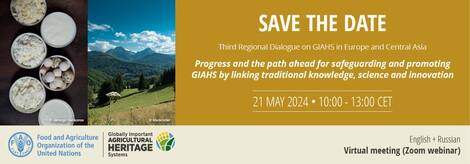
©FAO/ Liana John
L’histoire de la pomme de terre remonte à environ 8 000 ans, dans les Andes, quand des groupes de chasseurs-cueilleurs commencèrent à domestiquer des variétés sauvages qui poussaient autour du lac Titicaca. Bien des siècles plus tard, autour du XVIe siècle, les Espagnols apportèrent la pomme de terre du Pérou en Europe et commencèrent à la cultiver chez eux. Ces tubercules cultivés en Espagne furent ensuite disséminés dans toute l’Europe, comme cadeaux exotiques...

©ARGE Heumilch
Through its Globally Important Agricultural Heritage Systems (GIAHS) initiative in Europe and Central Asia, the Food and Agriculture Organization of the United Nations (FAO) works to recognize and sustain traditional agricultural systems with rural cultures and economies and to promote and integrate them into broader food systems value chains. Science and innovation play important roles in underpinning the strength and viability of GIAHS.
Une tasse de thé... ou de cha?
21 May 2024
21 May 2024

Saviez-vous qu’il existe, pour l’essentiel, seulement deux mots pour désigner le thé dans le monde? Le premier est le mot «thé» et ses dérivés, par exemple tea en anglais, té en espagnol ou encore thee en néerlandais. Le deuxième est le mot chá (en mandarin et en cantonais) et ses dérivés, par exemple chai en hindi, shay en arabe et chay en russe. Il y a une raison intéressante à cela.

The third Regional Dialogue on GIAHS for Europe and Central Asia is a forum for GIAHS actors from across the region. Scientists and experts will provide scientific evidence gleaned from the work carried out in these agricultural systems, share keys to the resilience that characterizes these systems, and discuss the current threats that put their sustainability at risk.


